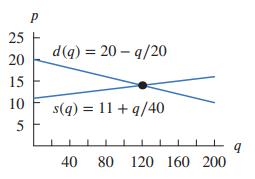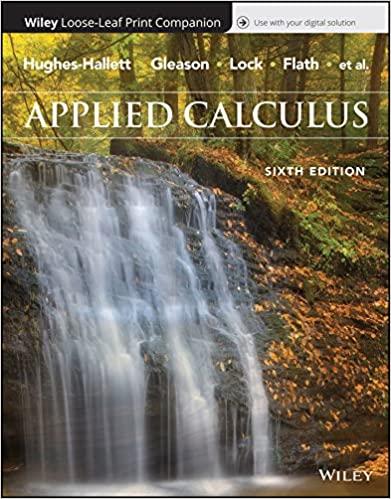A bakery owner knows that customers buy a total of q cakes when the price, p, is
Question:
A bakery owner knows that customers buy a total of q cakes when the price, p, is no more than p = d(q) = 20 − q∕20 dollars. She is willing to make and supply as many as q cakes at a price of p = s(q) = 11 + q∕40 dollars each. The graphs of d(q) and s(q) are in Figure 1.65.
(a) Why, in terms of the context, is the slope of d(q) negative and the slope of s(q) positive?
(b) Is each of the ordered pairs (q, p) a solution to the inequality p ≤ 20 − q∕20? Interpret your answers in terms of the context.
(60, 18) (120, 12)
(c) Graph in the qp-plane the solution set of the system of inequalities p ≤ 20 − q∕20, p ≥ 11 + q∕40. What does this solution set represent in terms of the context?
(d) What is the rightmost point of the solution set you graphed in part (c)? Interpret your answer in terms of the context.
Figure 1.65

Step by Step Answer:

Applied Calculus
ISBN: 9781119275565
6th Edition
Authors: Deborah Hughes Hallett, Patti Frazer Lock, Andrew M. Gleason, Daniel E. Flath, Sheldon P. Gordon, David O. Lomen, David Lovelock, William G. McCallum, Brad G. Osgood, Andrew Pasquale





